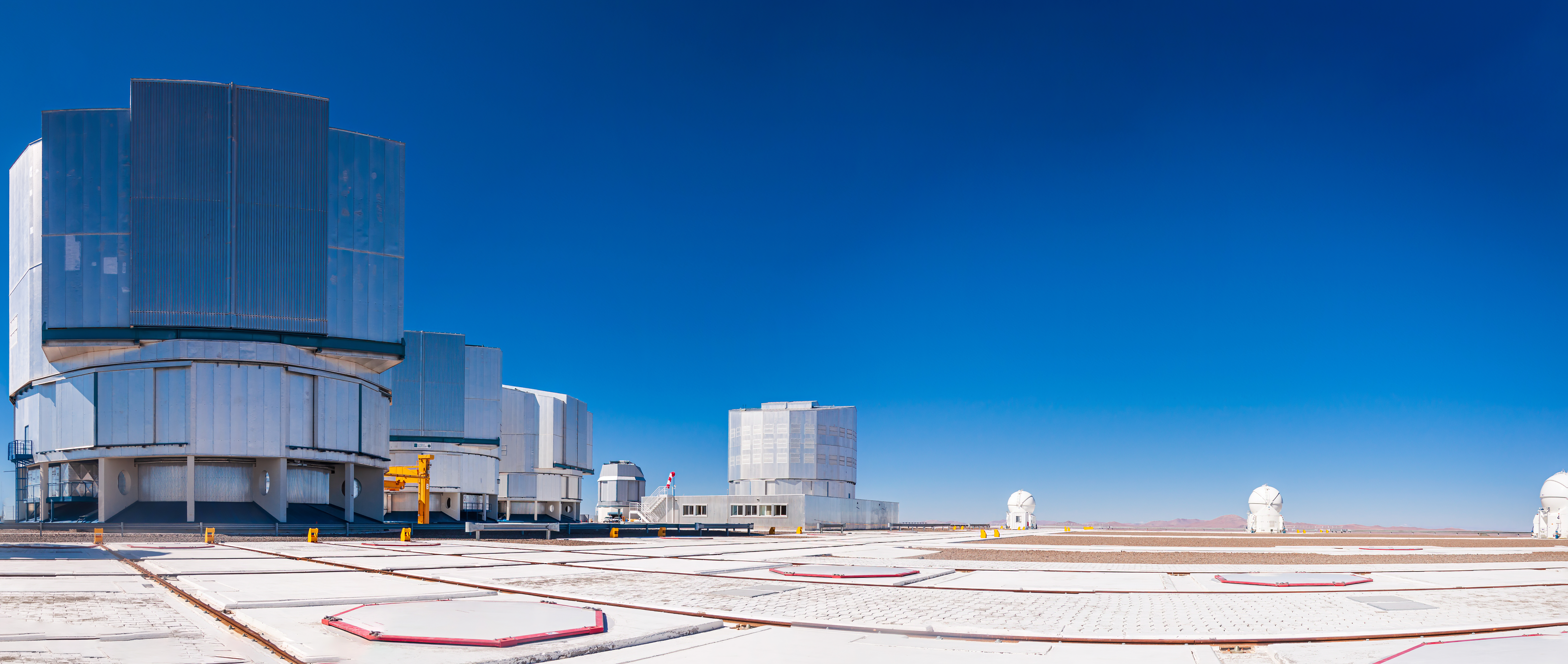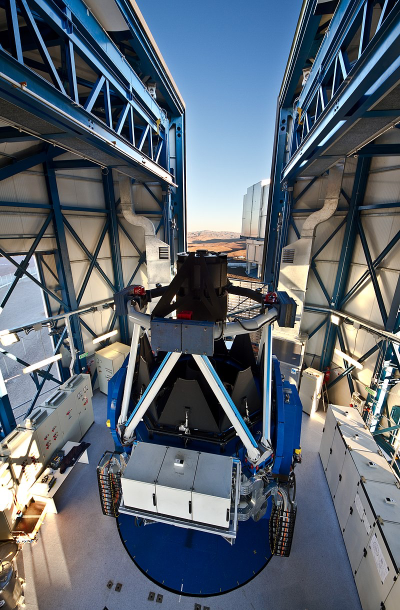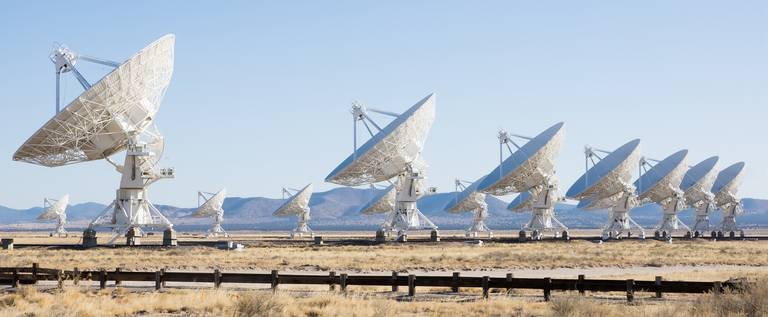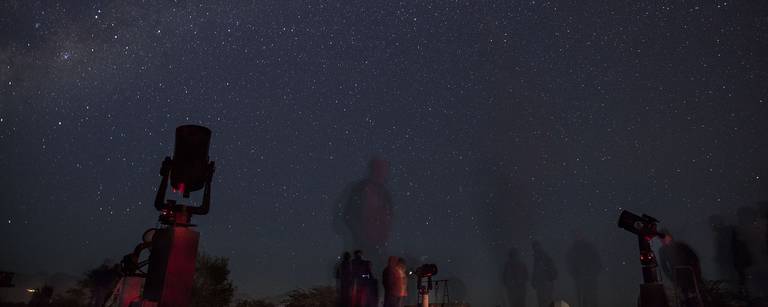Professional Observatories in Astronomy

One of the most rewarding aspects of astronomy is the sense of wonder and discovery you get by simply looking at the sky. This is true for both amateur and professional astronomers. But, how does observing the sky differ for professional and amateur astronomers?
Most often, professional astronomers are trying to understand some aspect of the Universe rather than just experiencing it. So, their work normally has a specific goal. They begin with a question, develop a method of investigating that question, and then hopefully answer it with astronomical observations. The professional observatory is equipped with the tools necessary for gathering the data astronomers need for their specific investigations.

One example of the tools available to professional astronomers is the Very Large Telescope (VLT) located at the top of Cerro Paranal in the Atacama Desert of Northern Chile, which is operated by the European Southern Observatory (ESO). ESO is an international organization that receives funding through national scientific research budgets of sixteen European governments. The ESO provides ground-based research facilities for astronomers worldwide and is spread across three different sites in the Chilean Andes. ESO consists of many different telescopes, all with their own specialties and instrumentation. The VLT is just one of ESO’s many telescopes. It actually consists of four individual instruments linked together, each with a primary mirror of 8.2m diameter.
Like most professional observatories, ESO operates on an open skies policy, meaning anyone, anywhere, can apply for time on ESO facilities and no person or group has priority over another. In practice, however, with limited time and resources available, an application for telescope time is a competitive process. Proposals are assessed by an expert committee, and time is awarded based on the scientific merits of the proposed observations.
Astronomers who make successful bids for time on the VLT may either travel to the telescope site in Chile to perform the observations or work with ESO staff to perform the observations remotely, usually from ESO’s headquarters in Germany. The advantages of being on the site are that the astronomer can react in real time to the observing conditions, the data quality, or the advice of technical staff.
How does a professional telescope differ from an amateur one? First, a large optical telescope usually has a system to alleviate the wobbling effect of Earth’s atmosphere. To do this an artificial star is created by shining a laser beam into the sky above the telescope and carefully watching how it appears to move. This information is then fed to an adaptive optics system, usually a set of actuators that warp the telescope mirror to cancel out the atmospheric distortion. These systems ensure the telescope gets the sharpest possible images.
The biggest difference with professional telescopes is that astronomers don’t look through them with their eyes. These telescopes don’t have eyepieces. Instead, they are equipped with a suite of instruments that can measure and/or record the light the telescope is receiving. The operation of the telescope and its instrumentation is a complex process so is usually performed by dedicated technical staff with the astronomer simply advising on the targets of interest and the format of the data required. For a professional, looking through a telescope usually means looking at a computer screen.
The simplest kind of instrument on a professional telescope is an imaging device. This is similar to devices used by amateur astronomers to photograph the sky. However, professional devices are custom-built digital cameras with a very large CCD sensor and many complex features. Generally, a telescope will have several imaging devices attached to it; each designed for specific purposes, with different resolutions, fields-of-view, and often operating in different bands of the electromagnetic spectrum. On ESO’s VLT there are three imaging devices; ERIS-NIX and HAWK-I, both near-infrared cameras, and VISIR, a mid-infrared camera.
Obviously, the images made by these kinds of devices have great aesthetic appeal; just think of the amazing images taken by the Hubble Space Telescope. But the astronomer often uses them for more than just a visual representation of their chosen objects. Taking a series of long exposures using specific filters that capture more than just visible light can reveal information on the temperature associated with objects in the images and even on their constituent chemistry. For nearby targets, a series of images may also be used to study the motion of objects.
Another important astronomical device is known as a photometer. This is an instrument that measures the intensity of light. Most modern photometers use CCD sensors as the measuring device so it isn’t uncommon to find that photometry capabilities are built into imaging devices. Again, with different filters as described above, the astronomer can use photometric data to deduce temperatures and other physical quantities.
The final type of instrument used by professional astronomers is an extremely important one, and it is perhaps the most widely used: the spectrograph. These devices take the light of whatever object in space the telescope is capturing and spread it out into its component colors, the spectrum. You may have done this at school with a prism and on a rainy day, you may have seen the beautiful effect of a natural spectrograph of sorts, in the shape of a rainbow. A spectrometer reveals the chemical elements present in the observed object: its motion, temperature, mass, size, density, magnetic fields and so on. Most spectrographs use a “grating” instead of a prism and the resulting spectrum is usually recorded by a CCD camera. The VLT currently has eleven different spectrographs available for research; each with different capabilities.
The data acquired by the astronomer at the telescope usually requires complex analysis in order to reveal the underlying science. Eventually the astronomer will be able to answer the question they initially posed in their application for telescope time, or partially answer it, or refute some previous ideas, or even throw up further questions. Ultimately, though, the astronomer’s work is written up as a research article, assessed by experts in the field, and eventually published so that the entire astronomical community can benefit from and expand the knowledge obtained.
Modern professional observatories are powerful, complex and diverse, enabling all sorts of astronomical investigations. They are also expensive to build and operate; therefore, they are generally multinational endeavors.
As we have seen, the way professional and amateur astronomers observe the sky can be very different. But there’s no question that both are driven by the same passion, curiosity and wonder.








